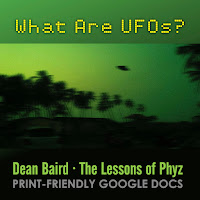The Lessons of Phyz
My high school physics and science curriculum at TPT, Pearson Education, Arbor Scientific, and PhET
Tuesday, August 26, 2025
BTSBONUS25 Sale August 26 and 27
Friday, May 2, 2025
Critical Condition: Health in Black America
Thursday, April 17, 2025
Secrets of the Forest
- Photosynthesis
- Trees
- Fungi
- Soil
- Insects
- Animals
- Humans
Saturday, April 12, 2025
Revolutionary War Weapons
Thursday, February 27, 2025
Baltimore Bridge Collapse
Tuesday, February 18, 2025
AI Protein Folding
Saturday, February 8, 2025
Dino Birds
Tuesday, February 4, 2025
Connected: The Hidden Science of Everything
Ever feel like you're being watched? Well, you may be right. Latif explores the sometimes cute, often creepy ways surveillance pervades our lives. Segments: Veeries, Piggies, Selfies, Sweeties.
Monday, January 27, 2025
Shot in the Arm
There are uncomfortable moments for those of us who remember it all. But there were important lessons, and it's important that they were learned.
I have questions. And they are free.
 SHOT IN THE ARM at TPT [Freebie]
SHOT IN THE ARM at TPT [Freebie]
Both skeptical and hopeful, SHOT IN THE ARM - from Academy Award-Nominated filmmaker Scott Hamilton Kennedy and Executive Producer Neil deGrasse Tyson - explores vaccine hesitancy historically and in the context of our modern pandemic. Can we replace cynicism with healthy curiosity and bridge the political divides that make us sick? Featuring: Tony Fauci, Paul Offit, and Robert Kennedy, Jr.
More information is available at http://shotinthearmmovie.com.
Wednesday, January 22, 2025
What Are UFOs?
Tuesday, January 14, 2025
UNKNOWN: Killer Robots
Sunday, January 12, 2025
UNKNOWN: Cosmic Time Machine
Sunday, January 5, 2025
Lost Tombs of Notre Dame
Friday, January 3, 2025
The New Jersey Drones Mass Delusion, Explained
- War of the Worlds
- The Delusion of Crowds
- Havana Syndrome
- Panic (Media Response in the Attention Economy)
- Evil Clowns
- Salem Witch Trials
Monday, December 30, 2024
Building Stuff
SPIN LAUNCH · HAPTIC DANCE · DOUBLE DUTCH · BIONIC VISIONAround the world, engineers are finding ingenious ways to amplify our abilities and senses—allowing us to access and shape the world way beyond our natural gifts. From helping a blind man see without the use of his eyes to building a sling so powerful it can shoot rockets into space, see why engineering just might be the closest thing to a superpower we humans have.WINDSCRAPERS · SAFE SUBMERSIBLES · FITTED FIRE SUIT · SPACE BASKET BOOMFrom the time our species first evolved, we’ve been on the move. Not content to stay in one place, we’ve imagined and invented and built our way from one place to the next. From deep sea subs to wind-resistant skyscrapers to next-gen space habitats, see how today’s engineers are designing and building creative new ways for us to get all around—and even off—our planet.DRONE TAXI · TUNABLE E-NOSE · CORAL SEE · EARTH FILTERThousands of years of human innovation have allowed us to shape the environment to improve lives. The consequences of our activities are not always benign—but there are solutions. From electrifying aviation, to building robots to protect threatened coral reefs, a new generation of engineers is finding creative solutions to some of our most critical environmental challenges.
Sunday, December 22, 2024
Rebuilding Notre Dame
Saturday, December 14, 2024
You're Probably Wrong About Rainbows
Monday, December 2, 2024
Leonardo Da Vinci
Leonardo da Vinci grows up in a Tuscan village surrounded by nature, then moves to Florence, where the Renaissance is in full bloom, to apprentice as an artist and craftsman. He shows extraordinary talent but at times struggles to finish commissions. Later, in Milan, he joins Duke Sforza’s court, begins writing treatises, and paints a monumental fresco depicting the Last Supper.Leonardo works as a military engineer, designs fanciful flying machines, studies light and shadow, investigates gravity, dissects cadavers, and pens treatises on a vast array of subjects, all while seeking the perfect patron. In Florence, Milan, Rome and finally France, he pours the sum of his scientific and artistic knowledge into a portrait that would become the most famous painting on earth.













